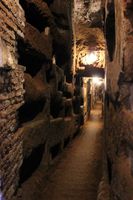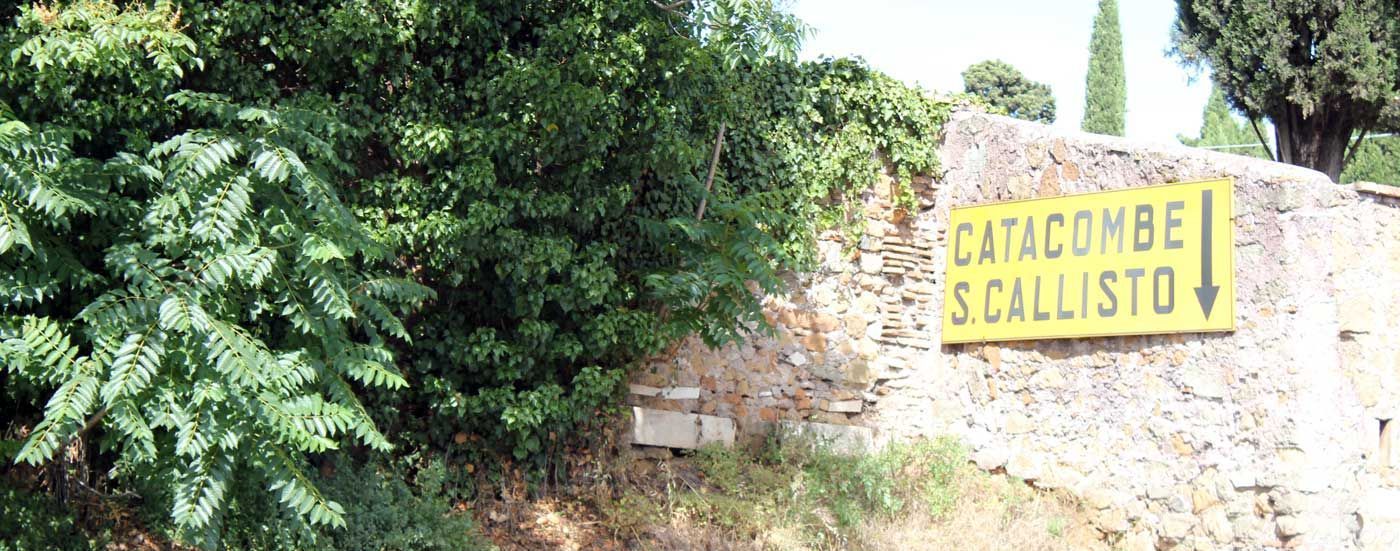Catacombs
Memorial
Catacombs in Rome
Early Christian burial grounds in the suburbs
Until the 5th Century A.D., it was forbidden in Rome to bury the dead within the city walls. The urns were therefore buried in mostly conspicuous and ostentatious tombs along the main streets of the empire not to be forgotten. Early Christianity rejected the pagan burning and wanted to bury the body as intact as possible for the resurrection. The high cost and the increasing lack of space forced them to find a new form of burial. To use the space optimally, they dug deep tunnels into the ground, in which the Christians were buried side by side in small niches. These Coemetrien, named after the Greek word for resting place, were recognized burial sites in whose interior the bones of thousands of earlier martyrs and simple believers rested. In the 9th Century, the early Christian burial grounds were eventually given up and they, along with their original name, deteriorated. When archaeologists began with the scientific study of the Christian tombs in the area around Catacomba near the San Sebastiano catacombs in the 16th Century, the early Christian burial sites also received its current name: Catacombs.
The Domitilla catacomb (Catacombe di Domitilla)
The Domitilla catacomb is an underground network of tunnels and, with some 15 kilometres, the largest underground grave facility of Rome. Flavia Domitilla was the niece of the Emperor Domitian, one of the cruellest persecutors of Christians. Banned for life because of their religion, she gave their property to the community, which erected the large grave system. Besides the grave chambers, paintings and marble slabs, the underground Basilica of St. Nereus and Achilleus is also worth visiting. The three-aisled basilica is well preserved. On display are some sarcophagi and the bishop's chair in the apse.
The Callixtus Catacombs (Catacombe di San Callisto)
The Callixtus catacomb is the oldest and, in the Church’s view, also most important catacomb in Rome. In about 20 kilometres far unexplored tunnels, the remains of at least 170,000 people are buried here. 6 Sacrament chapels dating from the 3rd and 4th Century are also on display here. In addition to various martyrs and St. Cecilia, a total of 9 popes from the 3rd Century are buried here as well. Especially nice are the numerous frescos, paintings and grave chambers, which are spread through the entire system.
Sebastiano catacombs (Catacombe di San Sebastiano)
The Sebastiano catacombs were scientifically researched as the first underground catacombs and gave the Christian catacomb tombs their name. According to legend, the bones of Saints Peter and Paul were kept here for a short time. In any case here rest the remains of the martyr Sebastian. The grave is based on an originally pagan core, which was later expanded with Christian graves. A basilica, three Roman grave houses and other residential buildings foundations were discovered here. Particularly interesting are the many Christian symbols on the walls.
The catacombs are open all year round. They have different rest days and are only partially closed because of maintenance. Except for major holidays at least one catacomb is always open. During the holiday season a large influx of tourists can be expected.
Entrance
€ 6,-









Tweet